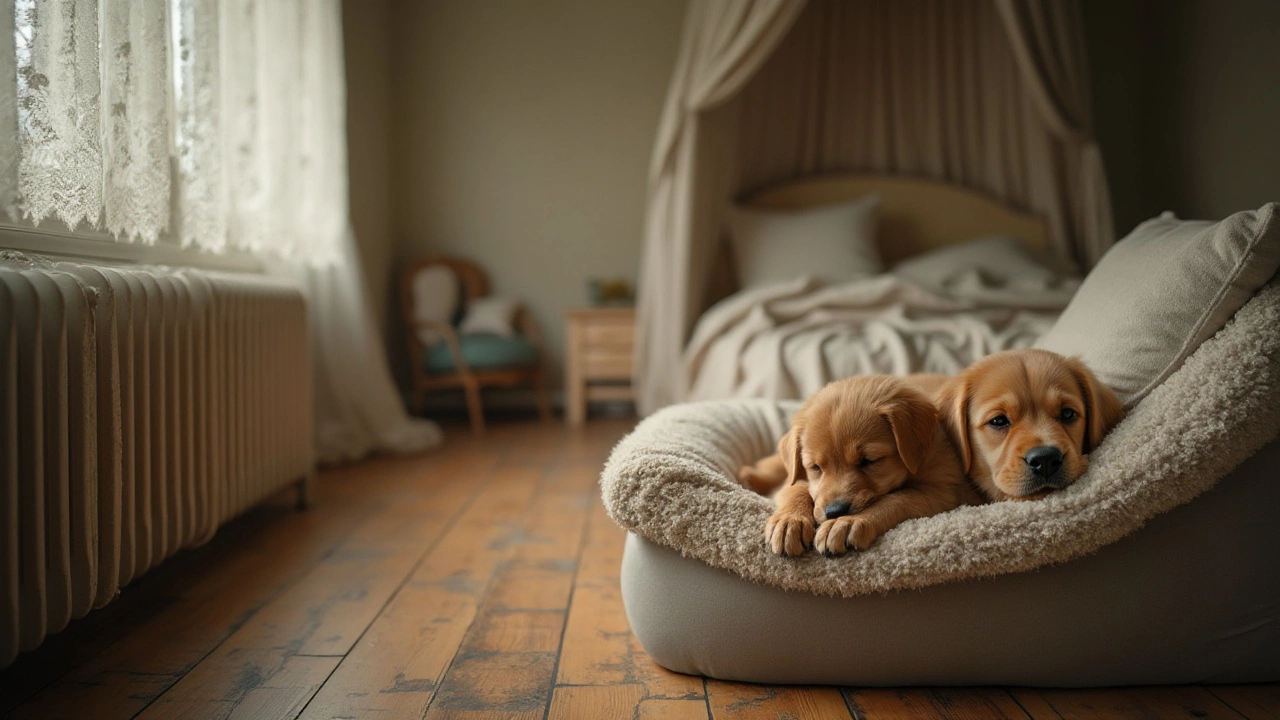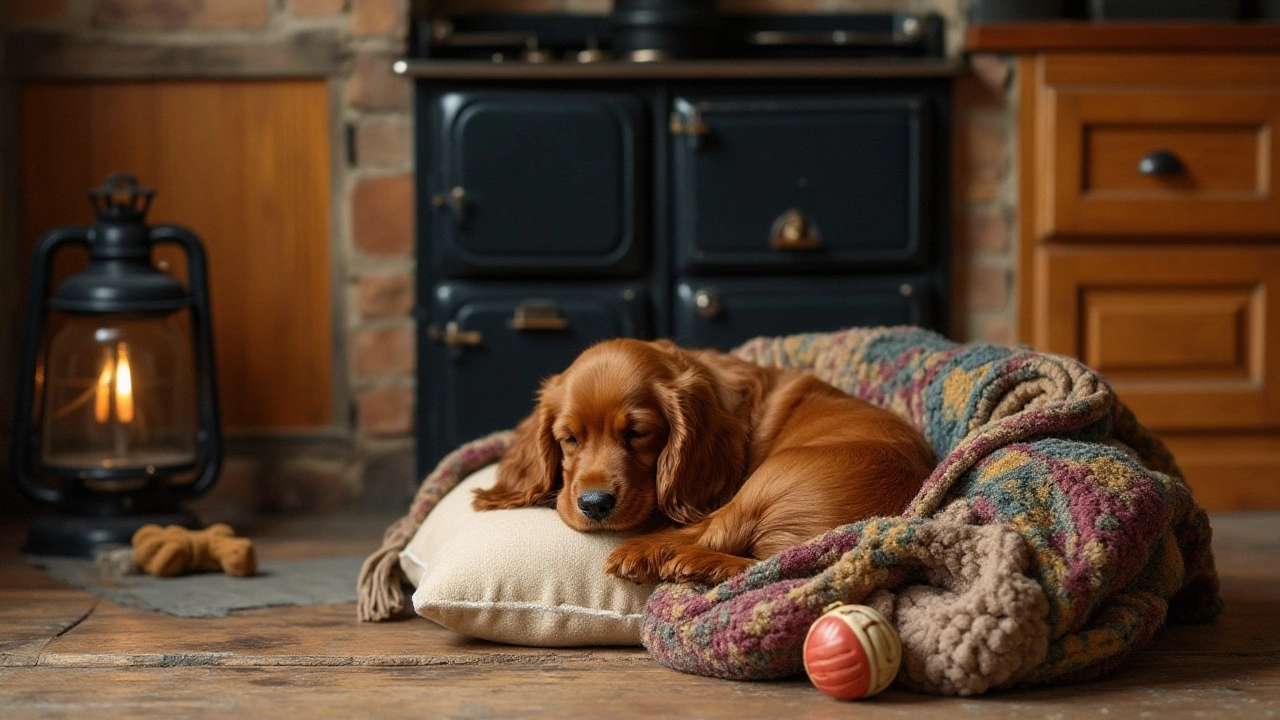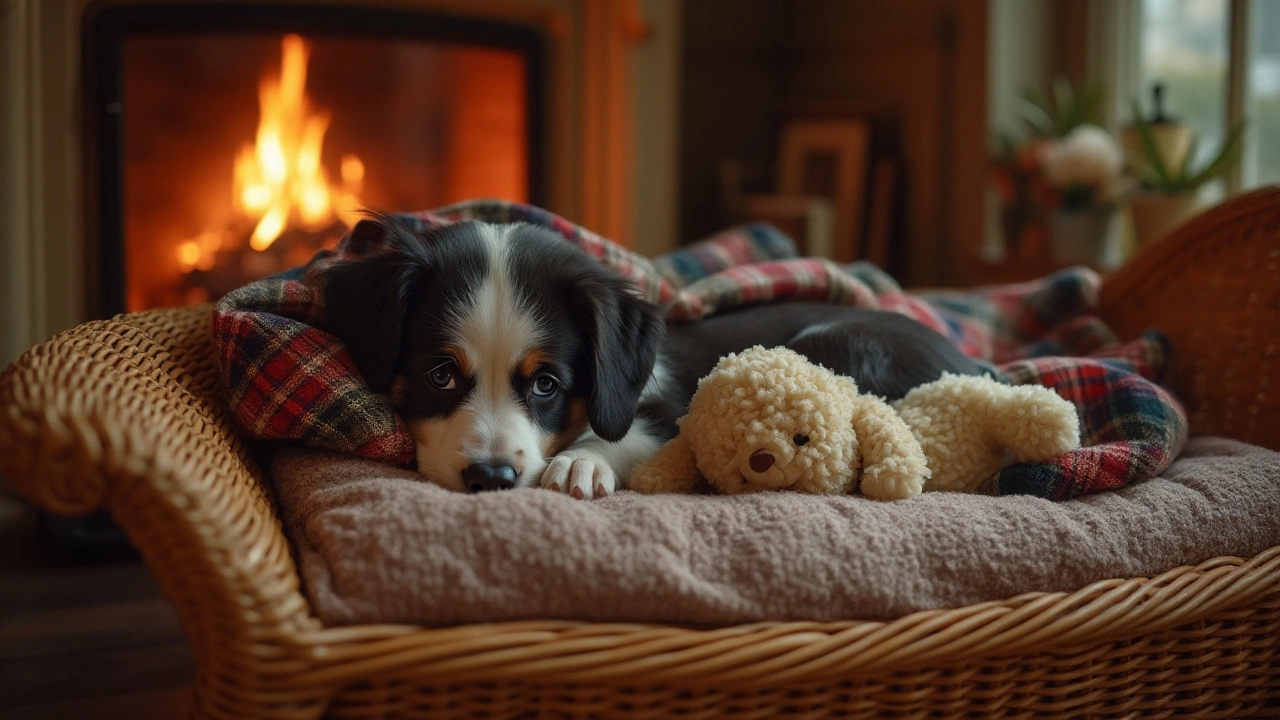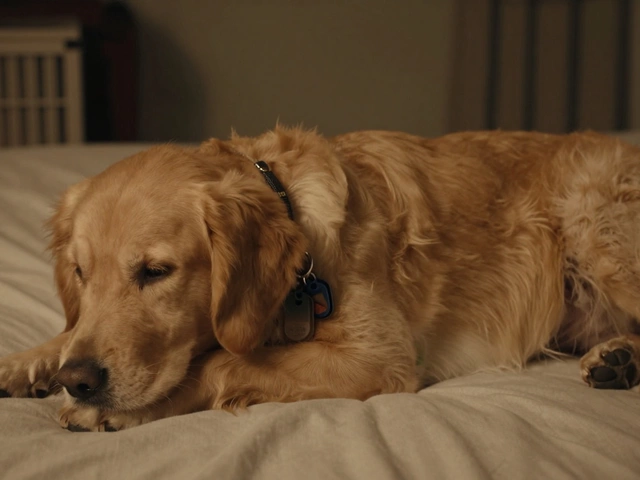You've just welcomed a new puppy into your home, and now the question looms large: where should this little fur ball sleep on the first night? As you embrace the joys and responsibilities of puppy parenthood, it's essential to set the stage for a peaceful night. The first night can be a bit overwhelming for your puppy, who is adapting to a new environment away from their littermates.
Deciding on the best sleeping arrangements can ease your puppy's transition and help establish a sense of safety and comfort. It’s not just about picking the right spot but also creating an inviting and secure sleeping area where your puppy will feel at home.
This guide will walk you through practical tips and considerations to ensure your puppy—and you—experience a restful night right from the start. With the right approach, you can help your puppy settle in smoothly, setting the foundation for a happy and harmonious relationship.
- Creating the Perfect Sleeping Space
- Choosing the Right Bed for Your Puppy
- Establishing a Bedtime Routine
- Managing Nighttime Anxiety and Whining
- Monitoring Your Puppy's Sleep Patterns
Creating the Perfect Sleeping Space
Embarking on the journey of puppy parenthood means swiftly learning how to create an inviting and secure sleeping area for your new puppy. This space is going to be more than just functional; it's the little nest where your puppy will feel safe and start building trust with you. Given that puppies often associate new places with uncertainty, providing them with a cozy haven will be the first step in easing their transition. Choosing the right spot is important—not too far from family activity but quiet enough to encourage rest. It’s akin to designing a nursery for a newborn, with attention to both comfort and practicality.
Many pet owners kickstart this journey by positioning the puppy bed in a corner of the living room or a dedicated section of the kitchen, where it’s not isolated but is away from trafficked routes. The area should be temperature controlled to ensure your pup is neither too hot nor too cold, as comfort is key to those much-needed naps. Puppies, like humans, thrive on routine, and placing the bed in a spot that can remain consistent will help cement that routine in the coming days. Consider the logistics of nightly trips to the great outdoors for potty breaks—the area should be easily accessible for middle-of-the-night potty training excursions.
It's also insightful to add familiar scents to the puppy sleep space, such as a blanket or a toy that smells like its mother or siblings, which can have a soothing effect. This, coupled with a few soft toys, can offer a semblance of company during those first solitary nights. Dr. Emily Weiss from the American Society for the Prevention of Cruelty to Animals suggests that incorporating a ticking clock or a heartbeat simulator can mimic the comforting sounds of a littermate’s heartbeat. This small addition could make a big difference in reducing nighttime anxiety. Also, keep a close watch on chewable items; puppies love to explore with their mouths, so ensuring safety is paramount.
As noted by renowned pet behavior specialist,
“Consistency and comfort in a puppy’s sleeping environment immediately reduce stress and promote security,” – Dr. Sarah Hunter.One should not underestimate how a well-crafted sleeping space accelerates house training by establishing clear boundaries. A soft-sided crate with an open door serves dual purposes: it provides secure boundaries for a puppy, as well as a 'safe haven'. A crate doesn’t have to feel like a cage—ensure it’s spacious enough for movement but snug enough to feel den-like. Additionally, lining it with a thick blanket or crate pad adds comfort.
Given the wonderful versatility of the internet, there's also an array of small gadgets aimed at improving the first night with a puppy. Temperature-adjusting mats can help provide comfort during colder nights, while sound machines specifically designed for calming pets offer white noise to lull your pup to sleep. New puppy care benefits from these creative solutions, which blend innovation with practicality, ensuring your pup enjoys peaceful slumbers.
Choosing the Right Bed for Your Puppy
When it comes to selecting a bed for your new puppy, think of it as setting the foundation for a cozy and secure sleep. Puppies need a comfortable and suitably sized bed that caters to their sleeping needs and tendencies. While there are a plethora of options available in pet shops and online, the key is to choose a bed that complements your puppy’s size, breed, and sleeping habits.
Most puppies appreciate a bed that provides a sense of enclosure, much like a nest. This mimics the comfort of being in a litter and can help alleviate any separation anxiety they might experience. For small to medium-sized puppies, a donut or bolstered bed can offer that snug feeling, while larger puppies might prefer a mat-style or memory foam bed that gives them room to stretch. It's essential to consider how much your puppy will grow; investing in an adjustable bed or one with removable cushions can be practical as they mature.
Durability is another critical factor. Puppies, known for their playful biting and chewing phases, can be quite hard on their belongings. Opt for beds made with tough, chew-resistant materials that can withstand a little rough use. Washable beds or those with removable covers are both a practical and hygienic choice, making it easier to keep your puppy's sleeping area clean and free from odors. Washing the bed regularly can prevent the buildup of dirt, fleas, and allergens.
Puppy sleep is vital for their development, and the bed you choose can significantly affect how well they rest. It’s worth noting that puppies spend a considerable amount of time sleeping—up to 18 hours a day. Therefore, selecting a bed with adequate support, such as those with orthopedic pads, can contribute positively to their growth and musculoskeletal health. Remember, a well-rested puppy is a happy puppy, ready to learn and explore.
Cost can be a determinant for many puppy owners when choosing a bed. While it's tempting to go for a higher-end, luxury model, there are plenty of affordable options that offer great comfort and durability. Pet charities and forums can often provide insights into which brands offer the best value for money. It's also wise to read reviews from other pet owners to gauge the bed's practicality and longevity.
According to Dr. Sophia Yin, a renowned veterinarian and animal behaviorist, “A comfy bed is more than just a place to rest; it's a refuge from potential stressors in their new world.” Paying attention to the subtleties of your puppy’s behavior can guide you toward the ideal choice. If your puppy tends to burrow or nestle into blankets, consider a bed with a built-in blanket or hood.
Ultimately, listening to your puppy’s preferences is as important as any expert advice. Some puppies might reject a fancy bed in favor of a soft blanket in their crate the first few nights. Be patient and flexible, and make sure to include a piece of clothing or fabric that carries your scent, providing reassurance during this adjustment period. The goal is to ensure your puppy feels safe, secure, and ready to tackle each day with excitement from a good night's sleep.

Establishing a Bedtime Routine
Creating a bedtime routine for your new puppy is an essential step in ensuring they feel safe, comfortable, and ready for sleep each night. Just as routines help children feel more secure, they play a vital role in a puppy's life, offering predictability in an otherwise new and sometimes daunting world. Start by setting a consistent bedtime for your puppy. Having a regular schedule syncs with their natural body rhythms, helping them to settle down more easily and understand when it's time to sleep.
About an hour before bedtime, engage your puppy in some light play. This is a great way to expend any remaining energy, ensuring your puppy feels tired, but not overstimulated. Tailor these activities to their age and breed; smaller breeds or young puppies may tire quickly compared to larger, more energetic breeds. After playtime, transition to a calmer environment. Dim the lights, minimize loud noises, and encourage quiet activities such as chewing on a toy. This helps signal that the day is winding down and sleep is approaching.
Feeding your puppy their last meal at least a couple of hours before bedtime helps avoid midnight bathroom emergencies. Alongside meal timing, sticking to a consistent bathroom break schedule is crucial. Take your puppy outside for a last trip to relieve themselves right before heading to bed. Ensure this trip is calm and efficient to avoid disrupting the relaxed mood you've set. Puppies typically have small bladders and may need to whimper or bark during the night to signal another bathroom trip, so listen closely while refraining from engaging in play or conversation during these breaks.
Once your puppy is settled into their puppy bed or sleeping area, soothe them using a gentle, calming voice, which can be reassuring when navigating this new and scary experience on their own. You may even place a soft, warm blanket or an item of your clothing with your scent near them. Familiar scents can be extremely comforting, providing a sense of security and familiarity in the absence of their littermates.
Robin Nichols, a renowned animal behaviorist, suggests,
"Consistent routines give puppies a framework in which they thrive. Knowing what to expect next helps them feel less anxious and more confident."Initial weeks might be challenging as your puppy adjusts to their new home, but patience is key. Gradually, you’ll find night's stress reduces, promoting a peaceful sleep for everyone. Always monitor your puppy's sleep closely initially, as disrupted patterns can sometimes signify discomfort or underlying health issues.
Consider introducing a bedtime cue - perhaps a specific phrase like 'goodnight' or a brief calming sound or music. Repeating this cue nightly can train your puppy to recognize when it’s time to sleep, offering consistency and comfort. Bedtime cues transform into a sort of signal or sleeping magic by encouraging specific associations with sleep time.
The entire process may take a few weeks as they adapt, but persistence is fundamental. By fostering a secure, comforting environment and maintaining routines, you'll not only support healthy sleep patterns but also fortify the growing bond between you and your puppy. Adjusting and personalizing these routines can lead to a harmonious household where both puppies and owners enjoy a restful night.
Managing Nighttime Anxiety and Whining
When a puppy first arrives home, the transition can be as tough for them as it is thrilling for you. It’s not uncommon for a puppy to experience some level of nighttime anxiety. After all, they’re leaving behind the warmth and comfort of their litter and their mother. To help manage these anxious feelings and alleviate that persistent whining, it’s essential to tap into a sense of security for the pup. Providing a combination of comfort tools can ease this transition effectively. Consider using a soft toy or blanket that holds the scent of their previous environment. These familiar scents have a soothing effect, offering reassurance and continuity between the old home and the new.
Another effective strategy involves establishing a calming routine close to bedtime. This could involve a gentle play session or a short walk to expend any pent-up energy. Make sure the physical activities remain moderate to avoid over-stimulation, leading to restlessness instead of relaxation. Incorporating a routine ensures your puppy learns to associate specific activities with sleeping time, helping them know what's next. According to Dr. Sophia Yin, a renowned veterinarian and animal behaviorist, “Routine creates familiarity, and familiarity breeds comfort. Puppies need to build trust in their environment and their caretakers.” It’s important to be patient and persistent with this routine as consistency is key to forming new habits.
When it comes to nocturnal anxiety, few tools are as helpful as a white noise machine or even a ticking clock. These devices can mimic the rhythmic breathing or heartbeat of a dam, creating a comforting background that drowns out alarming environmental noises. If white noise machines aren’t an option, consider a fan or soft, calming music. It’s fascinating how quickly your puppy can learn to find solace in these soothing, ambient sounds. Ensure also to provide a warm environment, as warmth often implies safety. If your pup continues to whine, it might sometimes indicate a need to relieve themselves. Always consider a strategic, short break that allows them to do their business quickly without providing any extra excitement that may further wake them.
Maintaining a gentle and reassuring approach is also crucial. Refrain from inadvertently reinforcing whining by offering too much comfort or attention when it happens. Responding to every whine might actually teach your puppy that such behavior garners attention, prolonging the anxious behavior. Instead, try acknowledging their discomfort but limit response to necessary checks. If they continue, they might need a little extra training or adjustment time to figure out boundaries. For data-driven insight, a study conducted in 2021 suggested that puppies generally adapt to their new sleeping environments within three to four weeks, provided they are given consistent support and encouragement.
Lastly, understanding that this is a phase helps tremendously. Nighttime anxiety and whining usually lessen as your puppy becomes familiar with their new home and builds a bond with you. This time of adjustment can sometimes test your patience, but each night offers a fresh opportunity for growth, learning, and strengthening your pet-parent relationship. Following these thoughtful practices can transform anxiety-filled nights into restful sleep, setting a foundation for your puppy's overall well-being.

Monitoring Your Puppy's Sleep Patterns
When welcoming a new puppy into your home, understanding their sleep patterns can be pivotal in ensuring that they grow up healthy and well-adjusted. Puppies, much like human babies, require a substantial amount of sleep, often between 18 to 20 hours each day. Sleep is crucial for their development, and closely monitoring these patterns can provide insights into their health and well-being.
Pay attention to your puppy's sleep cycles. Most puppies experience rapid eye movement (REM) sleep, which is essential for brain development. During this phase, you might notice twitching, little barks, or even movement, all of which are normal. Establishing a consistent routine around your puppy’s sleep will help them settle down faster. Routine is critical; young puppies thrive on knowing what to expect, and a predictable schedule will make nights smoother for both of you. Allow your puppy to settle into a natural rhythm of activity and rest by providing quiet, uninterrupted areas where they feel safe enough to relax fully.
Should you notice deviations in your puppy's sleep patterns, such as prolonged wakefulness, restlessness, or excessive daytime sleeping without activity, these could signal underlying issues such as anxiety or a medical condition. A puppy that doesn't get enough quality sleep can develop behavioral problems or show signs of stress. Here, close observation is key, as is consulting with your vet if anything seems amiss. It’s always better to err on the side of caution. Consistently leverage tools like puppy monitors, which can alert you to unusual movements or noises during the night.
Puppies may not have the bladder control to last an entire night, which means late-night toilet breaks are part of early days. Gradually extend the time between breaks until your puppy can comfortably sleep through the night. Have patience in the meanwhile and anticipate some interruptions. You might want to keep a log of their waking times, length of sleep episodes, and any notable behavior. This can be incredibly handy when you consult veterinarians or puppy trainers.
According to the American Kennel Club, "A well-rested puppy is less likely to chew destructively or bark excessively."This reinforces the idea that sufficient sleep contributes significantly to a puppy’s overall training and temperament. Creating a conducive environment means ensuring their sleeping area is not too hot or cold, and any potential sources of disturbance are minimized. Establishing quiet times around the home, particularly in the evenings, can also help make it clear to your puppy that it’s time for bed.







